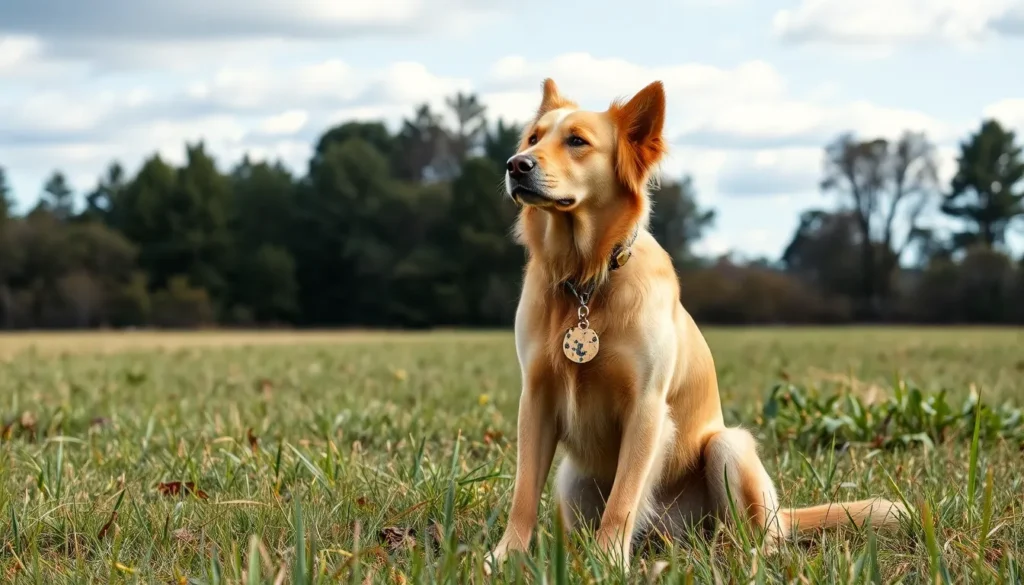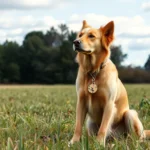When we think about the perfect hunting companion, bird dogs immediately come to mind as nature’s most skilled retrievers and pointers. These remarkable canines have been bred for centuries to excel at finding, flushing, and retrieving game birds with an instinct that’s simply unmatched in the animal kingdom.
We’ve all witnessed the incredible sight of a pointer frozen in perfect form or a retriever plunging fearlessly into icy water to bring back our prize. But there’s so much more to these athletic hunters than meets the eye. From their specialized training techniques to their unique physical adaptations, bird dogs represent the pinnacle of canine-human cooperation in the field.
Whether you’re a seasoned hunter looking to add a four-legged partner to your team or simply curious about these extraordinary working dogs, we’ll explore everything you need to know about selecting, training, and caring for the ultimate bird dog companion.
What Are Bird Dogs?
Bird dogs represent specialized hunting breeds developed specifically for locating and retrieving game birds. These canines possess genetic traits refined through generations of selective breeding to excel in upland and waterfowl hunting scenarios.
Primary Bird Dog Categories
Sporting breeds fall into distinct classifications based on their hunting methods:
- Pointers freeze in position when detecting bird scent, creating a rigid stance that alerts hunters to game location
- Setters crouch low to the ground upon finding birds, maintaining this position until the hunter approaches
- Retrievers focus on water-based hunting and soft-mouth retrieval of downed waterfowl
- Spaniels flush birds from cover while working within gun range of the hunter
- Continental breeds combine pointing and retrieving abilities in versatile hunting packages
Physical Adaptations for Hunting
Athletic builds characterize these working dogs, with muscular hindquarters providing explosive speed across varied terrain. Webbed feet assist water breeds like Chesapeake Bay Retrievers in swimming through marshlands and retrieving from icy waters.
Dense double coats protect breeds such as German Shorthaired Pointers from thorny underbrush and cold weather conditions. Enhanced scenting abilities result from elongated muzzles and enlarged nasal cavities that process airborne bird scents with remarkable precision.
Behavioral Characteristics
Natural prey drive motivates bird dogs to pursue feathered game without requiring extensive encouragement from handlers. Trainability ranks exceptionally high among sporting breeds, with most responding to whistle commands and hand signals from distances exceeding 100 yards.
Soft mouths prevent damage to retrieved game birds, allowing these dogs to carry delicate waterfowl without puncturing the skin or crushing bones. Pack mentality enables multiple bird dogs to work cooperatively during group hunts without competing destructively for the same quarry.
Popular Bird Dog Breeds
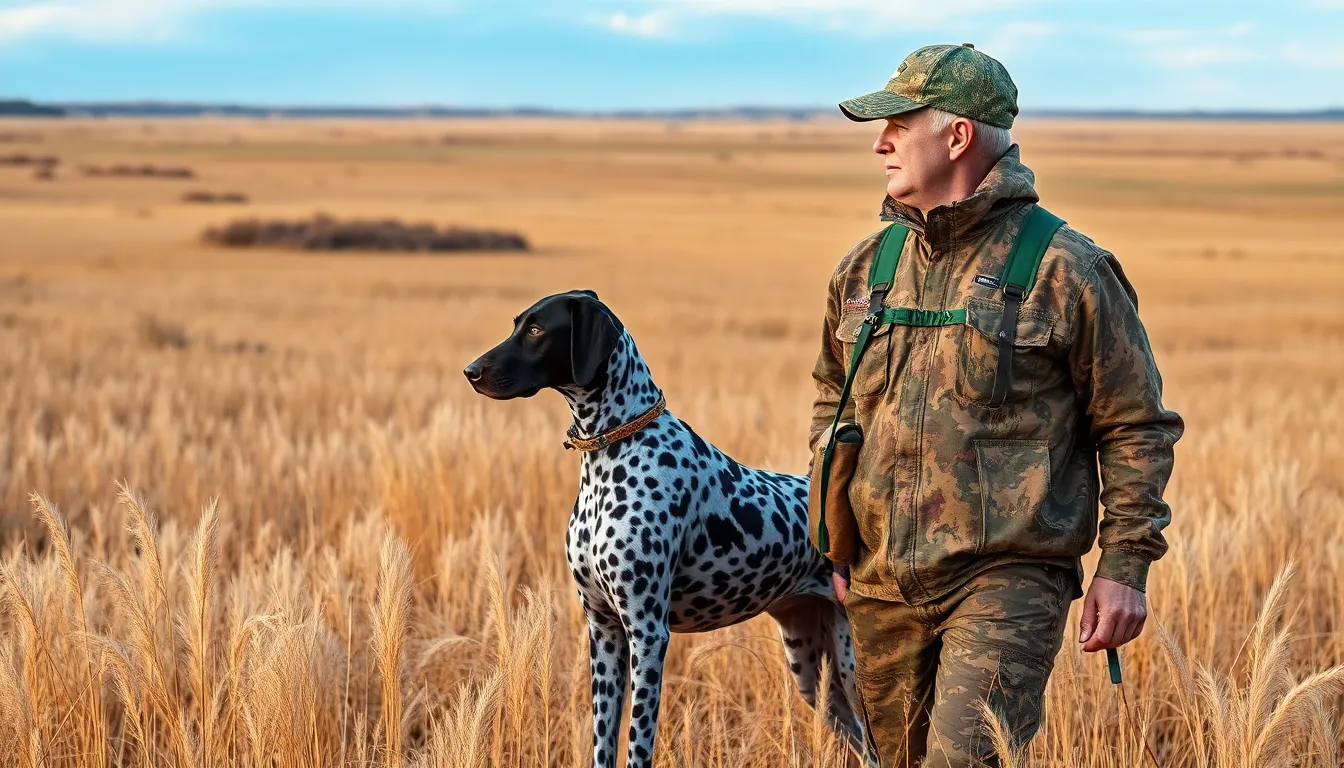
We’ve carefully selected these four breed categories to showcase the most effective and widely recognized bird dogs. Each category represents distinct hunting methods and specialized traits that make them exceptional field companions.
Pointers and Setters
English Pointers stand as the most athletic of all pointing breeds, capable of covering 15-20 miles during a single hunt. These dogs freeze in their iconic pointing stance when they detect game birds, with their body rigid and tail extended straight back. German Shorthaired Pointers combine pointing ability with versatile retrieving skills, making them excellent choices for hunters pursuing multiple game species like pheasants, quail, and ducks.
English Setters display their signature “setting” behavior by crouching low when they locate birds, a trait that originally helped hunters cast nets over both dog and game. Irish Setters bring remarkable endurance to the field, often hunting for 8-10 hours without fatigue. Gordon Setters work closer to hunters than other setter breeds, typically staying within 100-200 yards while maintaining their methodical search patterns.
Retrievers
Labrador Retrievers excel in waterfowl hunting due to their double-layered coat that provides insulation in water temperatures as low as 35°F. These dogs can retrieve up to 300 birds in a single day during peak waterfowl seasons. Golden Retrievers possess exceptional memory for multiple bird falls, accurately marking and retrieving 4-6 downed birds in sequence.
Chesapeake Bay Retrievers handle the roughest water conditions, including breaking through ice up to 2 inches thick to retrieve waterfowl. Flat Coated Retrievers maintain their enthusiastic retrieving drive well into their senior years, often remaining active hunters until age 12-14. Nova Scotia Duck Tolling Retrievers use their unique “tolling” technique, playing along shorelines to attract curious waterfowl within gun range.
Spaniels
English Springer Spaniels cover dense cover systematically, working within 25-30 yards of hunters to flush game birds from thick brush. These dogs excel at locating and flushing pheasants from cattail marshes and grassland cover. Cocker Spaniels demonstrate exceptional nose work in woodcock hunting, following scent trails that are often 30-60 minutes old.
Welsh Springer Spaniels adapt to various terrain types, from mountainous regions to coastal marshlands, maintaining consistent hunting performance across different environments. Boykin Spaniels originated in South Carolina for hunting wild turkeys and doves, weighing 25-40 pounds to fit comfortably in small hunting boats.
Continental European Breeds
Vizslas track wounded game birds for distances exceeding 500 yards, following blood trails and scent patterns with remarkable precision. These Hungarian pointers maintain close contact with hunters, rarely ranging beyond 50 yards during upland bird hunts. Weimaraners combine pointing and retrieving abilities with the stamina to hunt large game birds like wild turkey throughout entire day excursions.
German Wirehaired Pointers feature weather resistant coats that protect them during hunting in temperatures ranging from 10°F to 90°F. Brittany Spaniels cover ground efficiently in open terrain, often hunting at speeds of 8-12 mph while maintaining scenting accuracy. Wirehaired Pointing Griffons excel in thick cover hunting, using their protective facial hair to navigate through dense brambles and thorny vegetation without injury.
Training Your Bird Dog
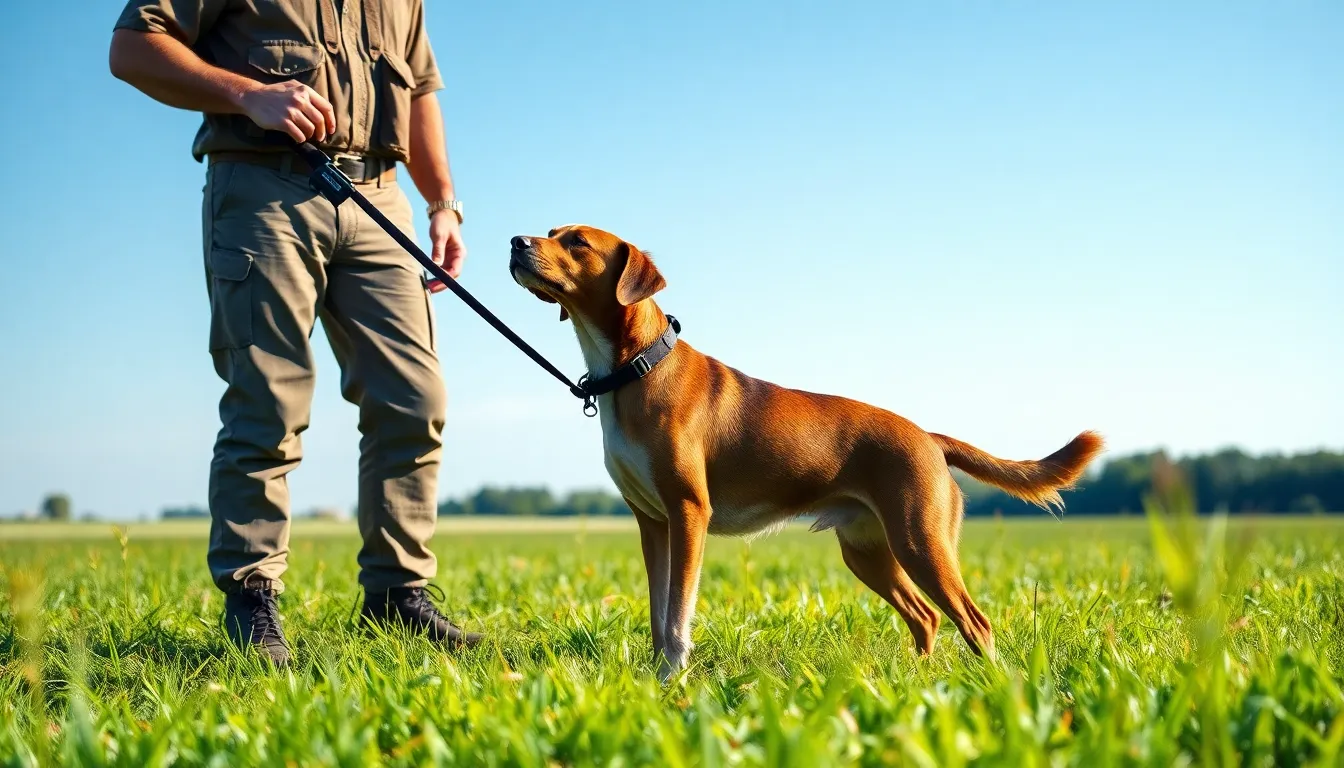
Training your bird dog requires a systematic approach that builds upon each skill progressively. We recommend starting with foundational obedience before advancing to specialized hunting techniques that maximize their natural abilities.
Basic Obedience and Socialization
Establishing foundational commands creates the backbone of effective bird dog training. We focus on teaching essential commands like sit, stay, heel, and come during the first 8-12 weeks of training. Young dogs between 8-16 weeks benefit most from consistent daily sessions lasting 10-15 minutes each.
Socialization exposes puppies to various environments including different terrains, weather conditions, and wildlife sounds. We introduce controlled exposure to gunshots using starter pistols at 50-yard distances, gradually decreasing the distance as comfort levels increase. Early bird scent introduction occurs through frozen game birds or commercial scent training aids.
Leash training develops proper walking behavior before field work begins. Retriever breeds like Labs and Goldens respond well to positive reinforcement methods, while pointer breeds such as English Setters often require firmer guidance. We establish boundary training using check cords ranging from 20-50 feet in length.
Field Training Techniques
Field training transforms basic obedience into practical hunting skills through structured exercises. We begin with quartering patterns where dogs learn to work back and forth across hunting areas in 30-40 yard sweeps. Pointer breeds naturally develop their characteristic freeze stance when detecting game scent.
Retrieving training starts with canvas dummies weighing 8-12 ounces before progressing to actual game birds. We practice water retrieves in shallow areas first, then advance to deeper water as swimming confidence builds. Spaniel breeds excel at close-range flushing work within 25-30 yards of handlers.
Steady training teaches dogs to remain motionless when birds flush until receiving release commands. Continental breeds like Vizslas and Weimaraners require consistent repetition over 6-8 month periods to master steadiness. We use planted birds in training scenarios, starting with pen-raised quail or pigeons.
Advanced Hunting Skills
Advanced hunting skills refine natural instincts into precise field performance through specialized techniques. We develop blind retrieve abilities where dogs follow hand signals and whistle commands to locate downed birds they didn’t see fall. Multiple mark training teaches dogs to remember the locations of 2-3 birds simultaneously.
Honoring training ensures dogs remain steady while their hunting partners work birds nearby. Pointing breeds learn to back other dogs’ points from distances of 15-20 feet. We practice these scenarios using multiple dogs in controlled training environments.
Seasoned hunting dogs master complex retrieves in challenging conditions including thick cover and cold water. Retriever breeds demonstrate their value during late-season waterfowl hunts in temperatures below 32°F. We condition dogs for extended hunts lasting 4-6 hours through gradual endurance building exercises.
Force fetch training creates reliable delivery of game birds without dropping or damaging them. This technique typically requires 4-6 weeks of consistent daily practice sessions. We complete advanced training by testing dogs in realistic hunting scenarios across different game bird species and terrain types.
Choosing the Right Bird Dog for You
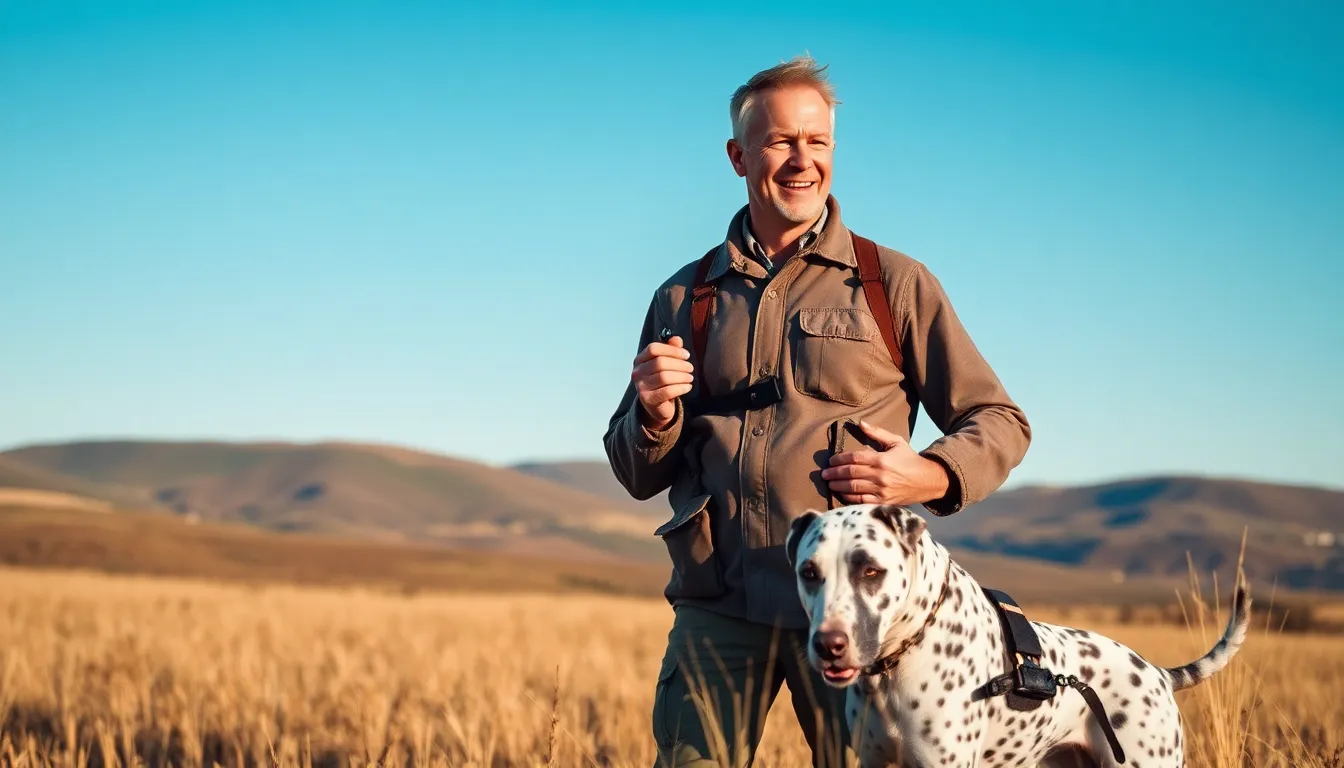
Selecting the perfect bird dog requires careful evaluation of your hunting preferences and personal circumstances. We match exact breeds to hunting styles and living situations to ensure successful partnerships.
Matching Breed to Hunting Style
Upland Game Hunting demands breeds with stamina and precise bird location skills. English Pointers excel in open terrain hunting with their 2-3 hour field endurance and distinctive pointing stance. German Shorthaired Pointers adapt to varied terrain and track wounded birds effectively. Brittany Spaniels work within 100-yard ranges and retrieve consistently in thick cover.
Waterfowl Hunting requires strong swimmers with cold-weather tolerance. Labrador Retrievers retrieve in water temperatures down to 35°F and handle 150+ retrieves per day. Chesapeake Bay Retrievers work in rough water conditions with their oily double coats providing insulation. Golden Retrievers combine gentle mouths with reliable marking abilities for long retrieves.
Versatile Hunting suits Continental breeds that point, flush, and retrieve. Vizslas track scent trails up to 12 hours old and maintain close working distances of 50-75 yards. Weimaraners handle both fur and feather game with their powerful builds and intense drive. German Wirehaired Pointers work in harsh weather conditions with their protective coat structure.
Specialized Terrain Hunting matches exact breeds to environmental challenges. English Setters navigate rocky mountainous terrain with their lower body profile. Irish Setters cover large territories with speeds reaching 25 mph. Cocker Spaniels flush game from dense undergrowth with their compact 28-32 pound frames.
Lifestyle and Living Situation Considerations
Exercise Requirements vary significantly among bird dog breeds. High-energy breeds like German Shorthaired Pointers require 90-120 minutes of daily exercise including off-leash running. Moderate-energy breeds such as Golden Retrievers maintain fitness with 60-75 minutes of structured activity. Lower-energy breeds like Sussex Spaniels satisfy exercise needs with 45-60 minutes of walking and play.
Living Space Compatibility affects breed selection based on housing arrangements. Large breeds including Chesapeake Bay Retrievers and Irish Setters require yards with minimum 6-foot fencing and 1/2 acre space. Medium breeds like Brittany Spaniels adapt to smaller yards but benefit from daily field access. Compact breeds such as Cocker Spaniels function in apartment settings with adequate daily exercise.
Family Integration considers household dynamics and member ages. Gentle breeds like Golden Retrievers interact safely with children under 5 years old and score 4.5/5 on family compatibility scales. Patient breeds including English Setters tolerate household chaos and adapt to multiple family schedules. Independent breeds such as Weimaraners prefer adult households and single-person bonding.
Training Commitment requires realistic time assessments for skill development. Beginning hunters invest 15-20 hours weekly during the first training year for basic obedience and field introduction. Experienced handlers dedicate 8-12 hours weekly maintaining advanced skills and seasonal conditioning. Professional training programs require 3-6 month commitments with costs ranging $1,500-$4,500 depending on skill level goals.
Health and Care Considerations
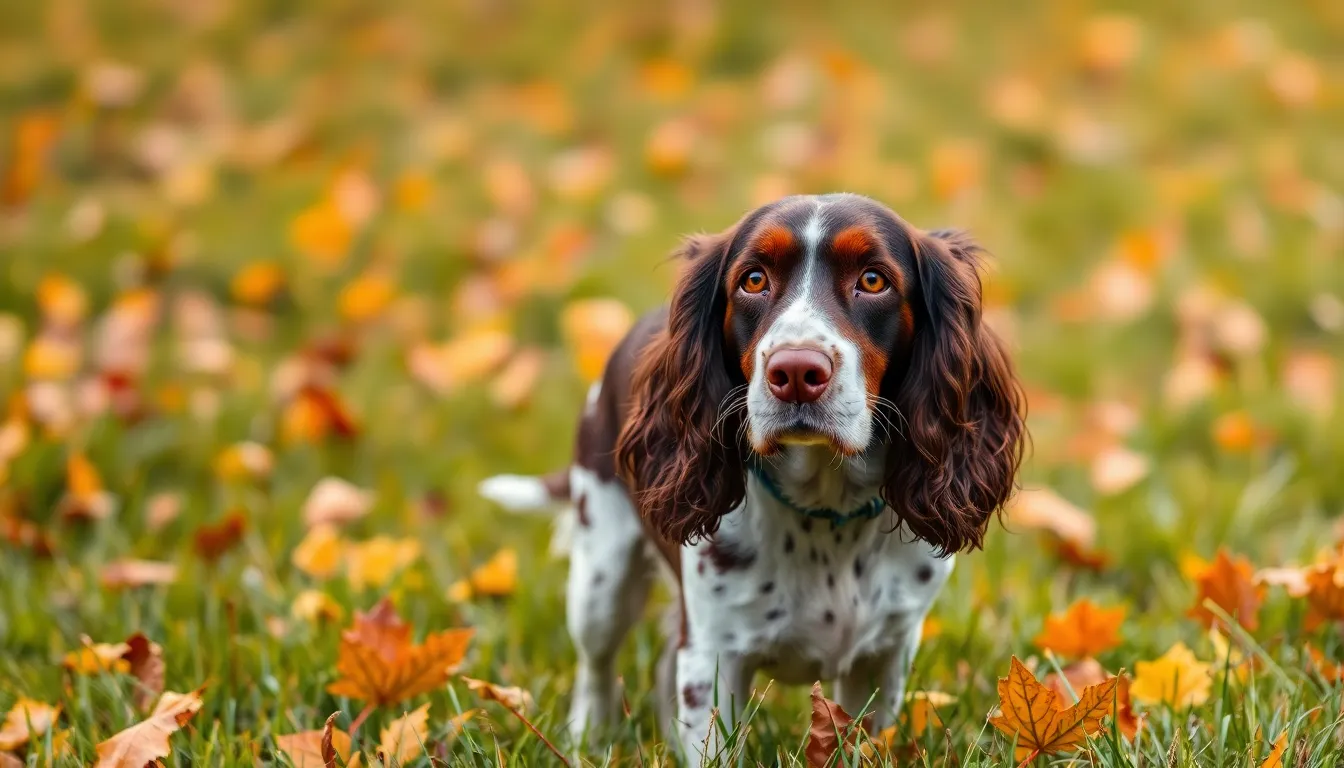
Bird dogs require exact health monitoring and care protocols to maintain peak performance throughout their hunting careers. We examine the most prevalent health challenges these breeds face and outline essential care requirements for optimal wellbeing.
Common Health Issues in Bird Dogs
Hip dysplasia affects approximately 20% of retriever breeds, particularly Labrador and Golden Retrievers, causing joint deterioration and mobility limitations. Elbow dysplasia presents similar concerns in pointer breeds like German Shorthaired Pointers and Vizslas, requiring early screening through OFA (Orthopedic Foundation for Animals) evaluations at 24 months.
Eye conditions plague multiple bird dog breeds, with progressive retinal atrophy (PRA) occurring in 8% of English Setters and cataracts developing in 15% of Chesapeake Bay Retrievers by age seven. Regular ophthalmologic examinations detect these hereditary conditions before vision impairment occurs.
Bloat (gastric dilatation volvulus) strikes deep-chested breeds including Weimaraners and German Shorthaired Pointers at rates of 6.2% and 4.9% respectively. Emergency veterinary intervention becomes critical within 2-4 hours of symptom onset to prevent fatal complications.
Epilepsy manifests in sporting breeds at frequencies ranging from 2-5%, with English Springer Spaniels showing higher predisposition rates. Seizure management through anticonvulsant medications allows affected dogs to maintain hunting capabilities when properly controlled.
Ear infections develop frequently in water-retrieving breeds due to moisture retention in pendulous ears. Cocker Spaniels experience chronic otitis externa at rates exceeding 25%, requiring weekly cleaning protocols and preventive care measures.
Exercise and Nutrition Requirements
Bird dogs demand 90-120 minutes of vigorous daily exercise to maintain physical conditioning and mental stability. High-intensity activities including swimming, running, and field training sessions prevent destructive behaviors while building stamina for hunting season.
Nutritional requirements vary significantly based on activity levels, with working bird dogs requiring 1,800-2,400 calories daily compared to 1,200-1,600 calories for sedentary companions. Protein content must reach 25-30% for active hunting dogs to support muscle development and recovery.
Feeding schedules optimize performance through two meals daily, with larger portions provided 3-4 hours before hunting activities. Free feeding practices increase bloat risks in susceptible breeds and compromise field performance through digestive timing issues.
Hydration needs escalate during hunting season, with active bird dogs requiring 1-1.5 ounces of water per pound of body weight daily. Electrolyte supplementation becomes essential during extended field sessions exceeding four hours in warm temperatures above 70°F.
Weight management prevents joint stress and maintains athletic performance, with ideal body condition scores ranging between 4-5 on the 9-point scale. Overweight bird dogs show 40% increased risk of hip dysplasia progression and reduced field endurance by 25%.
Bird Dog Performance in the Field
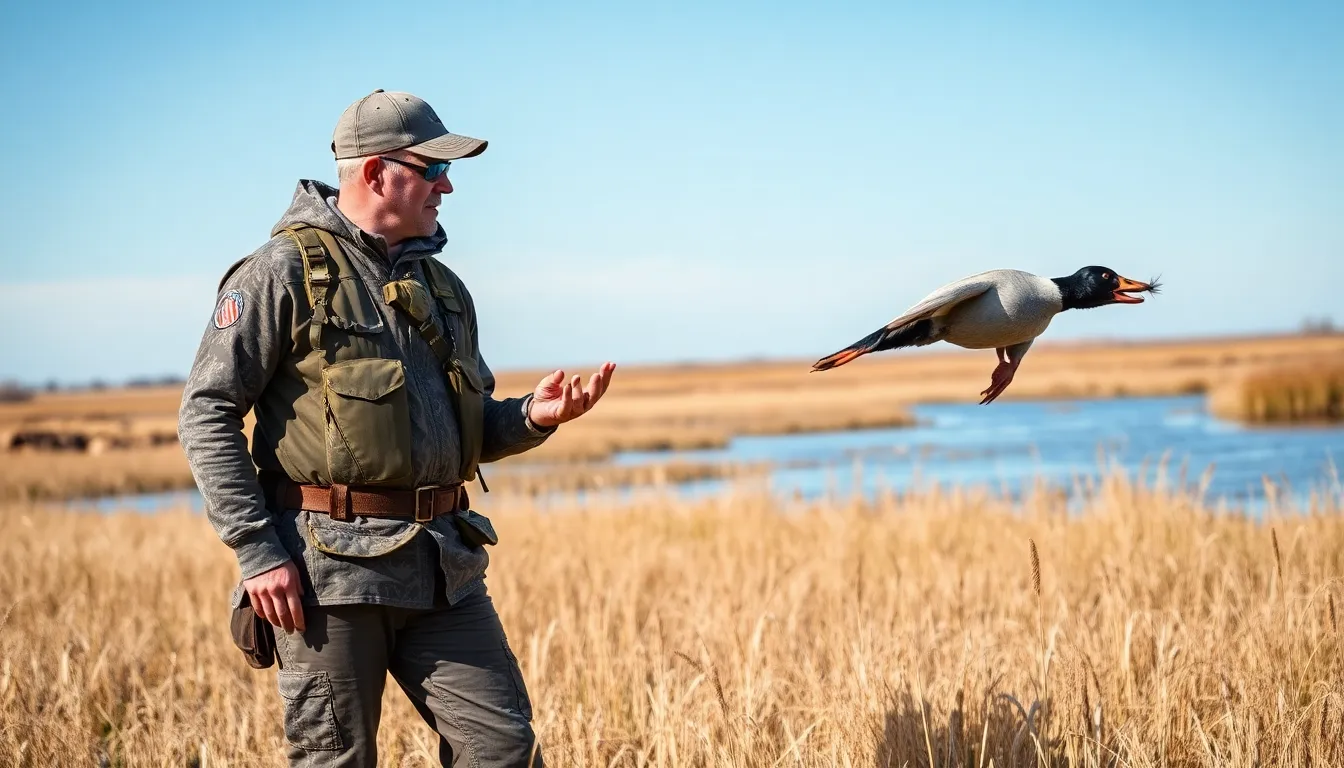
Bird dogs demonstrate their exceptional training and natural instincts through diverse field applications ranging from actual hunting scenarios to competitive evaluations. Performance metrics in real industry conditions reveal the effectiveness of specialized breeding and comprehensive training programs.
Hunting Different Game Birds
Upland game hunting requires bird dogs to navigate varied terrain while locating species like pheasants, quail, grouse, and partridge. English Setters excel in dense cover where their quartering patterns help locate scattered coveys across 200-300 yard ranges. German Shorthaired Pointers demonstrate versatility when hunting multiple species during single outings, adapting their search techniques based on bird behavior patterns.
Waterfowl hunting presents unique challenges that showcase retriever capabilities in aquatic environments. Labrador Retrievers perform water retrieves in temperatures as low as 32°F while maintaining soft mouth delivery of ducks and geese. Chesapeake Bay Retrievers handle rough water conditions with their oily double coats providing insulation during extended swimming sessions up to 100 yards from shore.
Continental breeds like Vizslas and Weimaraners excel when pursuing larger game birds such as wild turkey and woodcock. Their scenting ability allows detection of birds from distances exceeding 50 yards in favorable wind conditions. Brittany Spaniels prove effective for dove hunting where their compact size and agility enable quick directional changes while tracking fast flying targets.
Performance varies significantly based on weather conditions and seasonal factors. Hot weather above 80°F reduces scenting ability by approximately 40% compared to optimal temperatures between 45-65°F. Wind direction affects search patterns as dogs adjust their quartering angles to maximize scent detection efficiency.
Competition and Field Trials
Field trial competitions evaluate bird dog performance through standardized testing protocols that measure natural ability, training level, and handling responsiveness. American Kennel Club sanctioned trials feature four primary stakes: puppy, derby, all age, and amateur categories with exact age requirements and performance expectations.
Pointing breed trials assess style, intensity, range, and bird finding ability during 30-minute braces where dogs compete in pairs. Judges score dogs on a 100-point scale evaluating factors like boldness, independence, and staunchness on point. Top performing dogs maintain points for 5-10 minutes while handlers approach and flush birds without breaking stance.
Retriever trials test marking ability, memory, and trainability through increasingly complex scenarios involving multiple bird falls. Started level stakes feature single marked retrieves at distances up to 100 yards. Finished stakes include triple marked retrieves, blind retrieves, and honor situations where dogs remain steady while bracemates work.
Spaniel trials combine elements of both pointing and retrieving competitions through hunting tests that simulate realistic field conditions. Dogs must demonstrate quartering patterns, flushing techniques, and steady delivery while working within gun range of approximately 25-30 yards. Performance standards require dogs to remain within handler control throughout 20-minute scenarios.
Competition results provide objective measurements of breeding program success and training methodology effectiveness. National championship winners typically represent superior genetic combinations and intensive training regimens spanning 2-3 years of development.
Cost of Owning a Bird Dog
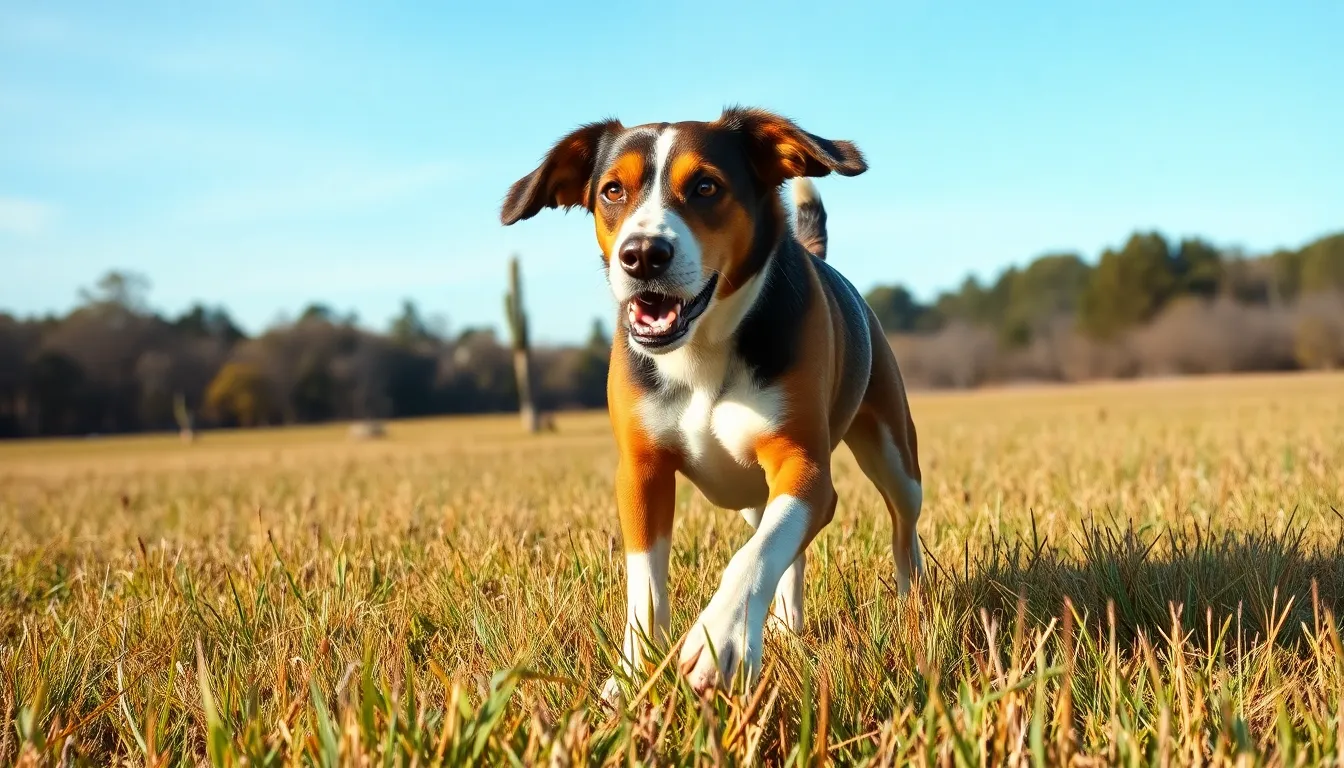
Bird dog ownership represents a important financial investment that extends far beyond the initial purchase price. We observe initial costs ranging from $1,200 to $8,000 for quality hunting breeds, with championship bloodlines commanding premium prices between $5,000 and $15,000.
Initial Purchase and Setup Expenses
| Expense Category | Price Range | Details |
|---|---|---|
| Puppy Purchase | $1,200 – $8,000 | Varies by breed and bloodline quality |
| Champion Bloodlines | $5,000 – $15,000 | Competition-proven genetics |
| Training Equipment | $300 – $800 | Collars, leads, dummies, launchers |
| Kennel Setup | $500 – $2,500 | Outdoor runs and housing systems |
| Initial Veterinary | $400 – $700 | Vaccinations, health screenings |
Professional training costs constitute the largest ongoing expense for bird dog owners. Basic obedience training ranges from $150 to $300 per month, while specialized hunting programs cost between $800 and $1,500 monthly. Board and train programs typically charge $1,200 to $2,000 per month for comprehensive development.
Annual Operating Costs
Quality nutrition forms the foundation of bird dog care, with premium hunting dog foods costing $600 to $1,200 annually. Active hunting dogs consume 25-40% more calories than sedentary pets, driving food costs higher during hunting season. Supplementation with joint support and performance enhancers adds $200 to $400 yearly.
Veterinary expenses for bird dogs exceed those of typical pets due to their athletic demands. Annual preventive care costs $800 to $1,200, including specialized screenings for hip dysplasia, eye conditions, and cardiac evaluations. Emergency veterinary bills for field injuries average $500 to $3,000 per incident.
Training Investment Timeline
Training investments vary significantly based on owner involvement and desired performance levels. Owner-trained dogs require 15-20 hours weekly time commitment but reduce costs to $200-500 annually for equipment and training materials. Professional guidance through private lessons costs $75 to $150 per session.
Competition expenses add substantial costs for serious enthusiasts. Entry fees range from $50 to $200 per trial, with travel and accommodation expenses averaging $300 to $800 per weekend event. Annual competition circuits can cost $3,000 to $8,000 depending on participation frequency.
Equipment and Maintenance
Specialized hunting equipment requires regular replacement due to field conditions. Training dummies last 6-12 months with regular use, costing $25 to $75 each. Electronic training collars range from $200 to $800 and typically need replacement every 3-5 years.
Vehicle modifications for bird dog transport include kennels, ramps, and protective covers costing $400 to $1,500. Hunting gear like vests, boots, and GPS collars add $300 to $700 annually for replacement and upgrades.
Long Term Financial Commitment
Bird dogs maintain peak performance for 8-12 years, creating decade-long financial commitments. Total lifetime costs range from $15,000 to $35,000 for moderately active hunting dogs. Serious competitors investing in professional training and extensive competition travel can spend $50,000 to $80,000 over a dog’s career.
Insurance coverage helps manage unexpected veterinary costs, with hunting dog policies costing $40 to $120 monthly. Coverage includes field injuries, emergency surgery, and chronic condition management exact to working breeds.
Conclusion
Owning a bird dog represents one of hunting’s most rewarding partnerships. These remarkable athletes bring centuries of specialized breeding and instinct to every field adventure we share with them.
Success with bird dogs requires dedication to proper training consistent health care and realistic financial planning. We’ve seen how the right match between hunter and dog creates an unbeatable team in the field.
Whether you’re drawn to the steady point of a setter or the enthusiastic retrieve of a spaniel these dogs offer unmatched companionship. Their loyalty and work ethic make every hunting season more productive and enjoyable.
The investment in time money and energy pays dividends through years of memorable hunts. A well-trained bird dog doesn’t just find game—it becomes an irreplaceable hunting partner and beloved family member.
Frequently Asked Questions
What exactly is a bird dog?
A bird dog is a specialized hunting breed developed specifically for locating and retrieving game birds. These dogs are categorized into distinct groups based on their hunting methods: pointers, setters, retrievers, spaniels, and continental breeds. Each type has been selectively bred over centuries to excel at specific hunting tasks, combining natural instincts with physical adaptations like athletic builds and webbed feet.
Which bird dog breeds are best for beginners?
For novice handlers, Labrador Retrievers and Golden Retrievers are excellent choices due to their high trainability, gentle temperaments, and versatility. English Springer Spaniels are also beginner-friendly with their cooperative nature. These breeds are more forgiving of training mistakes and adapt well to family life while maintaining strong hunting instincts and field performance capabilities.
How much exercise do bird dogs need daily?
Bird dogs require 90-120 minutes of vigorous daily exercise to maintain peak physical condition and mental wellbeing. This should include both physical activities like running, swimming, and field work, plus mental stimulation through training exercises. Without adequate exercise, these high-energy breeds can develop behavioral problems and lose their athletic conditioning essential for hunting performance.
What are the most common health issues in bird dogs?
Common health concerns include hip and elbow dysplasia, eye conditions like progressive retinal atrophy, bloat (gastric dilatation-volvulus), epilepsy, and ear infections. Regular veterinary checkups, proper nutrition, weight management, and preventive care are essential. Many breeds benefit from health screenings before breeding to reduce the risk of inherited conditions affecting future generations.
How much does it cost to own a bird dog?
Initial purchase prices range from $1,200 to $8,000 for quality breeds, with championship bloodlines costing significantly more. Total lifetime ownership costs can range from $15,000 to $80,000, including training, nutrition, veterinary care, and equipment. Ongoing annual expenses typically include food, veterinary care, training, and hunting equipment, making bird dogs a substantial financial commitment.
What training techniques work best for bird dogs?
Effective training follows a systematic approach starting with foundational obedience and socialization. Key techniques include leash training, field training with quartering patterns, retrieving exercises, and advanced skills like blind retrieves and force fetch training. Training should progress gradually from basic commands to complex hunting scenarios, building on the dog’s natural instincts while developing precise field performance.
Can bird dogs live in apartments or small homes?
While possible, bird dogs are best suited for homes with adequate space and access to outdoor areas. Their high exercise needs and athletic nature make apartment living challenging unless owners can provide extensive daily exercise and mental stimulation. Most bird dogs thrive with yards or rural settings where they can express their natural behaviors and maintain physical conditioning.
How do I choose the right bird dog breed for my hunting style?
Match breeds to your specific hunting needs: pointers and setters excel in upland game hunting, retrievers dominate waterfowl hunting, spaniels work well in thick cover, and continental breeds offer versatility. Consider your local terrain, game types, hunting frequency, and personal experience level. Also evaluate lifestyle factors like family integration, exercise capacity, and training commitment before making your selection.

